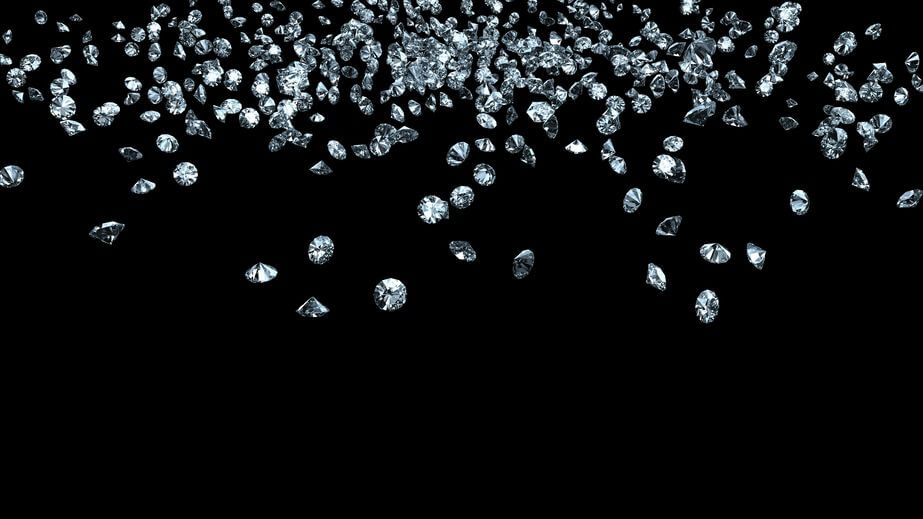How Much Are Diamonds Really Worth?
 It’s pretty common knowledge that loose diamonds can fetch a fair price. Even one small diamond can bring a sum of nearly £4,000! But how is this calculated and how much are diamonds actually worth?
It’s pretty common knowledge that loose diamonds can fetch a fair price. Even one small diamond can bring a sum of nearly £4,000! But how is this calculated and how much are diamonds actually worth?
Jewellers use a sophisticated system to work out the value of any diamond that crosses their path, and today we’re going to shed light on the process.
The 4 C’s
When calculating the worth of any diamond, jewellers use a basic system known as the four C’s. Each C represents a characteristic most sought for in a clear cut diamond. Those C’s are:
- Colour: This refers to how much or how little colour there is in the diamond, ranging from D to Z, D being colourless and Z being a light yellow. Colourless diamonds are more valuable as they allow more light to pass through and create extra sparkle.
- Cut Grade: The quality of the cut and proportions of a diamond all come under cut grade, which range from excellent to poor. An excellent cut, naturally, offers a much higher price.
- Clarity: Internal and external marks are all covered under clarity. This includes a grade range from FL to I3, FL being flawless and I3 being obviously flawed to the naked eye. A diamond may look good on the surface but further inspection through a loupe can reveal many hidden scratches.
- Carat Weight: This refers to the carat weight of the diamond, abbreviated to ct. The higher the carat weight, the more valuable. However, this doesn’t mean that bigger diamonds are inherently more valuable. Due to the above characteristics, this could very well lower the value significantly.
Other Elements
As well as the four C’s, other factors can weigh in on how much a diamond is worth. These factors include:
- Shape: Diamonds can be cut into many different shapes, each with their own value. The most highly sought-after shape is the round brilliant shape, but other prized shapes include the princess, cushion, pear or emerald cut.
- Symmetry: Similar to shape, symmetry refers to the alignment of its table, culet, crown and girdle. The grades range from excellent to poor.
- Fluorescence: Shining ultraviolet light through a diamond is common practise among jewellers and, depending on the level of fluorescence, can seriously affect value. The less fluorescence the better.
- Treatments: Artificial treatment of a diamond can affect value as well. Colour or clarity can be enhanced and cracks can be filled in, but all this acts against the diamond’s value.
Calculating Worth
Once all the above is taken into consideration, you can estimate the price of your diamond, though to be sure, it’s always best to get the professional opinion of a jeweller.
Let’s say you have a 0.50 carat diamond that has a little fluorescence with a couple of natural inclusions but is very symmetrical and an excellent cut. The first factor to base a value off would be the carat weight which, as of 2019, is around £1000 per carat (prices per carat significantly vary with quality and carat weight). With other factors brought in, you can make a rough guess as to the final price. In this case, we’d say that this diamond could be worth around £450-£550.
Now you know how much a diamond is worth, you may want some diamonds of your own. At Cuttings Jewellers, we purchase loose diamonds from responsible sources and sell them at reasonable prices.
For more details, visit our page.




